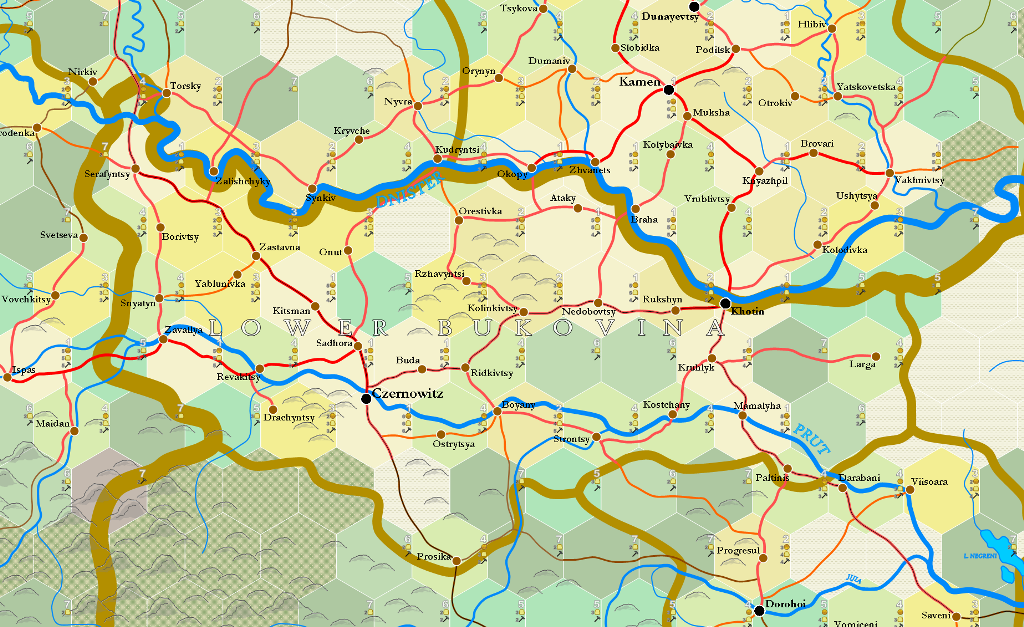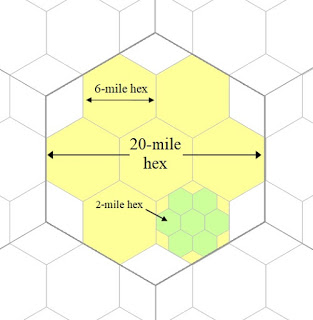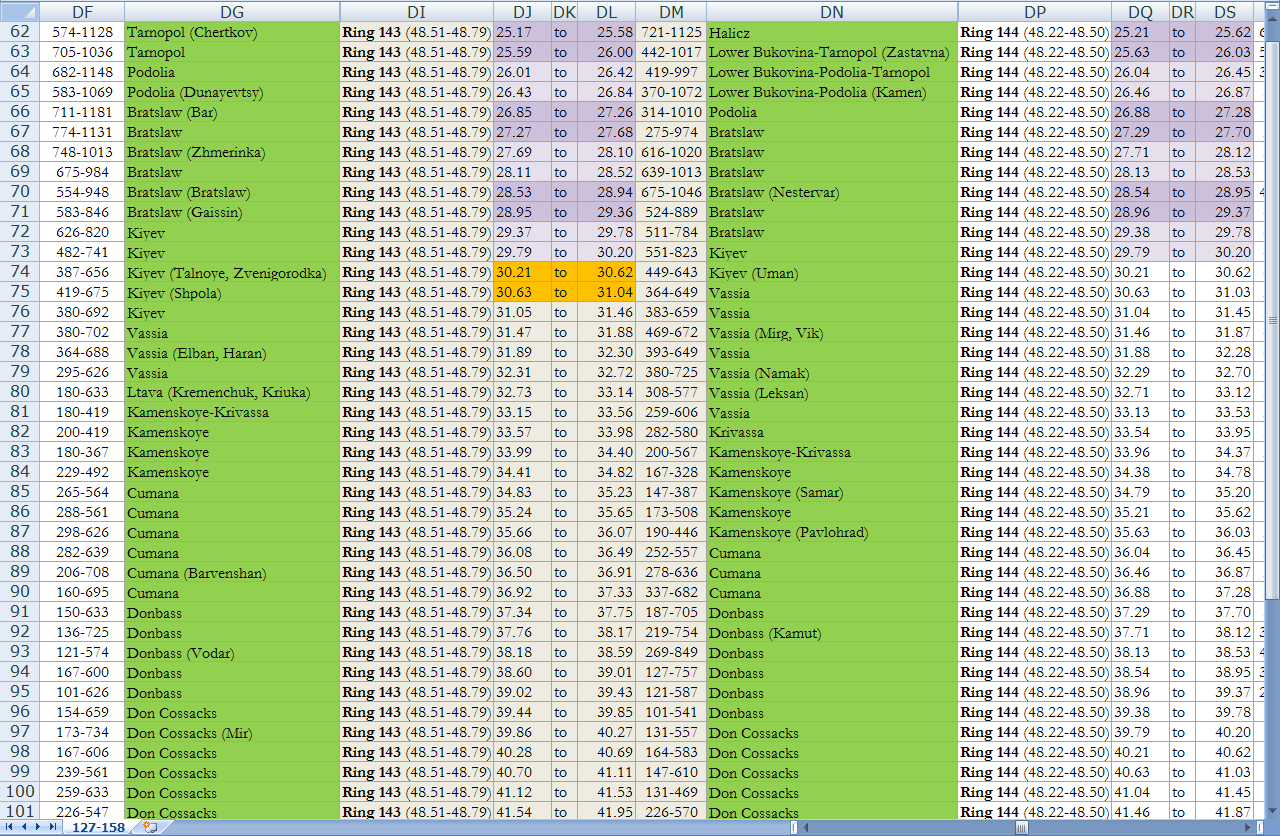Difference between revisions of "6-mile Hex Map"
Tao alexis (talk | contribs) |
Tao alexis (talk | contribs) |
||
| Line 6: | Line 6: | ||
[[File:Divided 20-mile hex.jpg|left|245px|thumb]] | [[File:Divided 20-mile hex.jpg|left|245px|thumb]] | ||
== Generation Procedure == | == Generation Procedure == | ||
| − | Once the infrastructure of a given 20-mile hex has been determined, and all of its surrounding hexes as well, a 6-mile hex template is laid over the 20-mile hex map. Every 20-mile hex has a precise designation as to its latitude and longitude coordinates, so that a rectangular "section" of the area to be mapped can be located on [https://earth.google.com/web/ GoogleEarth]. | + | Once the infrastructure of a given 20-mile hex has been determined, and all of its surrounding hexes as well, a 6-mile hex template is laid over the 20-mile hex map. Every 20-mile hex, everywhere in the world, has a precise designation as to its latitude and longitude coordinates, so that a rectangular "section" of the area to be mapped can be located on [https://earth.google.com/web/ GoogleEarth]. |
| + | |||
| + | [[File:Falling Rain Elevation Data.png|right|420px|thumb]] | ||
| + | The image on the right provides a section of these coordinate numbers, including the numbers used for the procedure given on this page. The area is the southern Kiv province in Ukraine. The numbers in brackets, 48.51-48.79 (N), specify the range of latitude above the equator. Each line of numbers in orange indicate the longitude boundaries of a specific 20-mile hex; one of these hexes is in Kiyev province, the other is in Vassia. Using these numbers, we can plot a rectangle of two 20-mile hexes on Google Earth. | ||
Revision as of 22:50, 13 December 2022
6-mile hex maps are zoomed-in maps derived from 20-mile hex maps, using a complex procedure of map drawing and random generation deriving from a map's infrastructure and real-world topography and place names.
Contents
The designation "6-mile" is an inaccurate description. 6-mile hexes are derived from splitting a 20-mile hex, as shown in the image below, and are in fact 6.67 mi. in diameter, not six. Nonetheless, the "6-mile" appellation is used as a simplification.
Generation Procedure
Once the infrastructure of a given 20-mile hex has been determined, and all of its surrounding hexes as well, a 6-mile hex template is laid over the 20-mile hex map. Every 20-mile hex, everywhere in the world, has a precise designation as to its latitude and longitude coordinates, so that a rectangular "section" of the area to be mapped can be located on GoogleEarth.
The image on the right provides a section of these coordinate numbers, including the numbers used for the procedure given on this page. The area is the southern Kiv province in Ukraine. The numbers in brackets, 48.51-48.79 (N), specify the range of latitude above the equator. Each line of numbers in orange indicate the longitude boundaries of a specific 20-mile hex; one of these hexes is in Kiyev province, the other is in Vassia. Using these numbers, we can plot a rectangle of two 20-mile hexes on Google Earth.


